Browse our online store and find the items that inspire you
Orthodox monks are required to wear distinctive vestments designed to remind them of the purpose and essence of their ministry. Some of these clothing elements are universal while others are individual for each monastic rank. All monastic clothes come from antiquity and carry a symbolic meaning.
Who Are the Monastics?
Monastics (monks or nuns) are believers who have made a decision to renounce the world and fully devote their lives to God. Orthodox monks take three vows: those of poverty, chastity and obedience.
The vow of poverty provides that a person completely renounces property, with the exception of the most essential things. As a rule, a monk’s personal belongings are limited to his clothes and a prayer rope.
The vow of chastity is important because a monk must devote all his time to his service. Having a family makes this impossible.
Holy Scripture (Heb. 13:17) commands obedience to one’s leaders. Thus, through obedience to the abbot (head) of the monastery, a monk submits his will to the will of God.
For an ordinary person, such a way of life may seem extremely difficult (and rightly so). However, monastics agree to such a way of life voluntarily, realizing what lofty goal they are pursuing.
From the History of Monastic Clothing
Most elements of monastic attire come from everyday clothes worn by ordinary citizens of the Roman Empire in the first millennium AD. For example, the monastic mantle appeared around the 4th century and was originally no different from the pallium, the common outerwear at that time.

Some elements of monastic clothing, although derived from everyday dress, took on a completely different meaning in monastic use. For example, the koukoulion, an ancient monastic hood, has become associated with a children’s cap, although in reality, it originated from the pallium. Despite looking unusual and even somewhat provocative, the koukoulion symbolized childish innocence and gentleness, and continued to be worn by monastics who followed the word of Christ and strove to be like children (see Matt. 18:3).
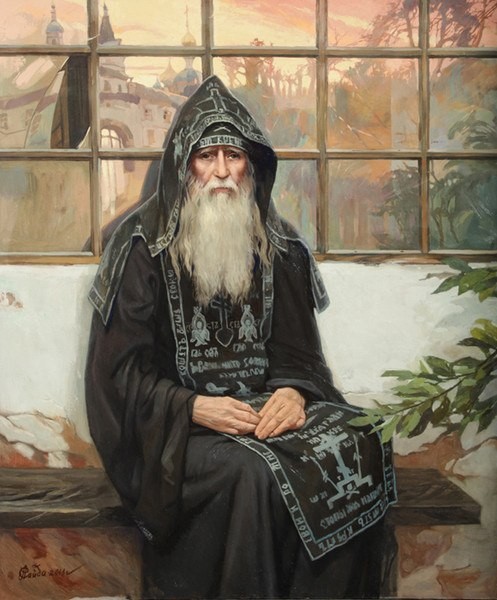
Some attributes, as will be seen further from the text, significantly changed their appearance with the course of history.
Degrees of Monasticism
In Orthodox monasticism, there are three levels: the rassaphore, the stavrophore (the lesser schema) and the great schema. Before entering a monastic community, a person needs to spend several probationary years as a novice.
Novice
A novice is a layman preparing himself to enter monasticism. It must be tested whether such a person is worthy of the monastic life and whether he can bear its burdens.
As a rule, the trial period is three years, but, depending on the specific situation and the practice accepted at a particular monastery, it can be less or more.
In accordance with the Regulations on Monasteries and Monastics of the Russian Orthodox Church, this probation period may be reduced for graduates of higher theological educational institutions wishing to take monastic vows.
A novice is addressed as “brother” or “sister”.
Rassaphore Monk
Rassaphore is considered the first stage of monasticism, although with some reservations. When tonsured into rassaphore, a monk does not pronounce monastic vows, which actually allows him to renounce monasticism in the future without any canonical consequences.
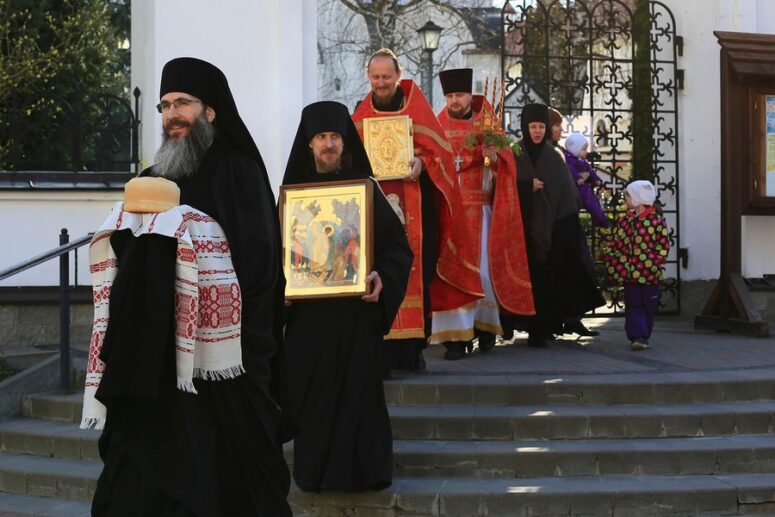
However, such cases are quite rare, since a person should decide whether the monastic life is suitable for him while still a novice.
In some monasteries, the rassaphore tonsure is associated with a change of name. This late practice appeared in the 18th century and is somewhat controversial.
It is permissible to address a rassaphore monk as “brother” or “sister”, as well as “father” or “mother”.
Stavrophore Monk (Lesser Schema)
This degree is sometimes called the “small angelic image”. Here a person fully enters the monastic life taking all three vows, while his name is changed as a sign of renunciation of the previous life and the beginning of a new one. Most monks remain in this rank, while a few move to the next step.
Schemamonk
This rank is the highest in monasticism and is referred to as “the great angelic image”. During the tonsure, a schemamonk repeats his monastic vows and his name is changed once more. A schemamonk is called to fulfil all the vows even more strictly than before. In fact, a schemamonk cannot have any obedience other than prayer. Great schema is a complete renunciation of the world and a perfect union with God.
A monastic, both in the small and in the great schema, should be addressed as “father” or “mother”.
Monastic Clothes: Basic Elements
A prayer rope. Although not a garment in the true sense of the word, a prayer rope is constantly worn by a monk. A prayer rope is a monk’s “mystical sword”, his main weapon on the spiritual battlefield.

A undercassock (esorason) is everyday wear for both monks and all clergy. It is a long (ankle- length) robe with narrow sleeves. It is most often black, less commonly grey, white, blue and red. An undercassock is tied with a monastic belt made of leather or canvas.
There are Greek, Russian and Bulgarian-style undercassocks.
A cassock (exorason) is another everyday wear item worn over an undercassock. Outwardly, it almost completely repeats the undercassock, only it has long wide sleeves and a looser cut.
An exorason can be Russian or Greek-cut.

Novices’ Clothes
Novice monks are allowed to wear undercassocks with a belt, while novice nuns can wear undercassocks and black headscarfs. Sometimes the former can receive a blessing for wearing a skufia, and the latter may be allowed to wear a black monastic veil called an epimandylion (apostolnik).
A Skufia is a small black hat, the folds on top of which form a cross. It is everyday headwear worn by priests and some minor clergy (with a blessing). In ancient times, all clerics were supposed to wear a tonsure (a round shaved area on the top of the head), and the skufia served to cover it. Even after the cessation of this practice, skufias did not fall into disuse. A monastic skufia is no different from the one worn by the “white clergy”.

An epimandylion (apostolnik) is a long bell-shaped monastic veil worn only by female monastics. This veil goes down the back and chest, has an opening for the face and ties on the sides.
Clothing Elements of a Rassaphore Monk
Rassaphore monks wear an undercassock with a belt, an exorason, a kamelaukion (sometimes with a veil) and a klobuk. A kamelaukion is worn only by hierodeacons and only during divine services. However, most often, a hierodeacon will be a stavrophore (rather than a rassaphore) monk.
A kamelaukion is an ancient oriental headdress originally serving as protection from the sun. The original kamelaukion was a small tight hat resembling a kippah. After the Ottomans conquered Constantinople, the Turks made everyone wear fezzes of certain colors. Black fezzes were then worn by all non-Muslims. Despite the fact that kamelaukia were replaced by fezzes, in the church environment this headdress retained its original name.
The Russian Church continued to use the old-style kamelaukia until the 17th century. In 1653, the Russian Patriarch Nikon carried out a reform, through which he sought to unify Russian vestments with the Greek model. This way, the Turkish fezze entered the dress code of the Russian monks.

The Russian kamelaukion is a headdress in the shape of a truncated cone, expanding upwards. The Greek version of the kamelaukion is a cylinder with narrow brims at the top.
A klobuk is a kamelaukion with a long black veil falling over the shoulders. The veil has three ends, symbolising the three Persons of the Holy Trinity.
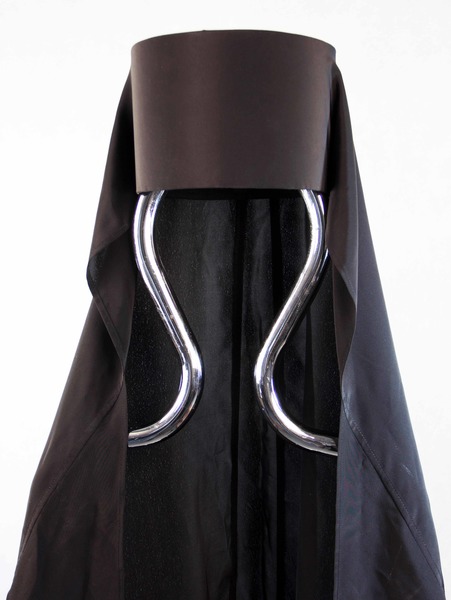
Monastic Clothing of the Lesser Schema
A rassophore monk wears a srachitsa (chiton), a paraman, a paraman cross, an undercassock with a belt, an exorason, a mantle and a klobuk.
A srachitsa is a thin white shirt. This scratchy and uncomfortable underwear serves as an image of the sackcloth worn by the ancient saints.
A paraman is a black square element with an image of the Calvary cross embroidered with red or white threads. It symbolizes the cross that a person must take upon himself in order to follow Christ (see Mark 8:34).

A paraman is worn on the back. There are four laces connecting its four corners with a wooden paraman cross worn on the chest.
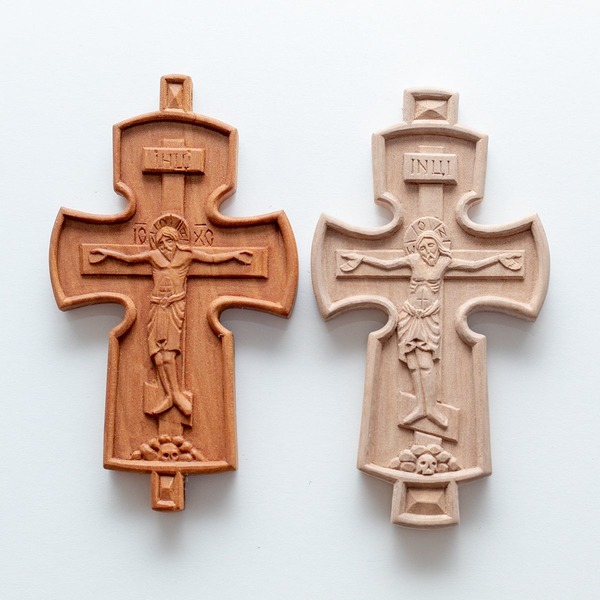
A mantle is a long loose cloak covering the entire body. It is tied only on the neck. It symbolizes complete renunciation of the world, in that it completely hides a person’s figure. There are forty folds on a mantle, according to the number of days of the Savior’s fasting and temptation in the desert. This is meant to remind of the need for fasting and spiritual struggle.
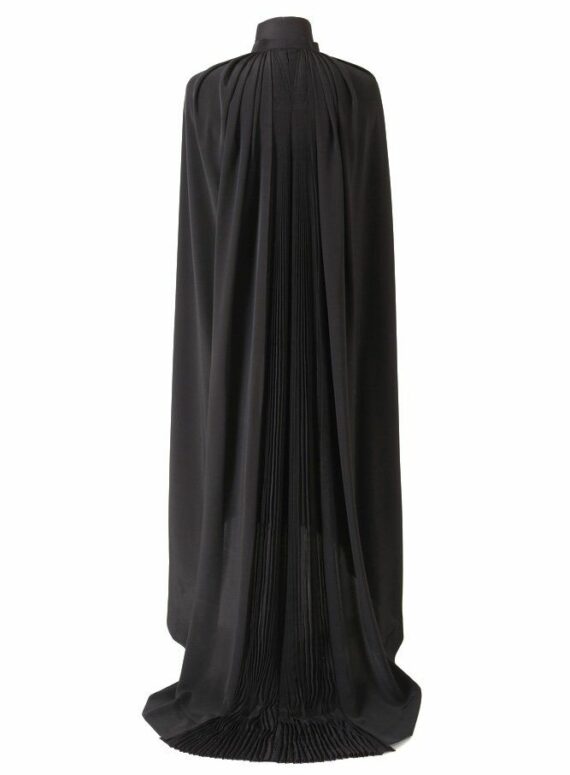
Monastic Clothing of the Great Schema
A schemamonk wears a chiton (the same as a srachitsa), an undercassock, an exorason, an analabos, a mantle, a skufia and a koukoulion.
An analabos is a kind of a paraman made exclusively for monastics in great schema. It is worn over the cassock and looks like a long black piece of fabric in the shape of a cross. Its ends fall on both shoulders, back and chest. An analabos is decorated with embroidered images of the Calvary cross, cherubim and seraphim, as well as words of prayers (most often the Trisagion or verses from psalms).
In modern practice, an analabos is sewn together with a koukoulion, a kind of a monastic hood. Originally, koukoulia were worn by all monastics, but in the period from the 13th to the 15th centuries, they became an exclusive attribute of schemamonks. Images on a koukoulion will repeat some of the images used in decorating an analabos. A koukoulion is worn over a skufia, which is also decorated with embroidered images of crosses and angels.
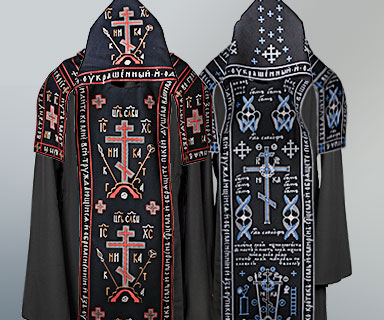
Nuns’ Clothing
There are in fact not many differences between male and female monastic robes. The most important one is that the cut of each vestment may differ due to the structural features of the male and female bodies.
An epimandylion (apostolnik) is a black monastic veil. This female-only headdress is used by novices (occasionally), rassaphore nuns, as well as nuns in great and lesser schema. This element of clothing comes from the ancient women’s headdress known as the maforium and seen on icons of the Most Holy Theotokos.
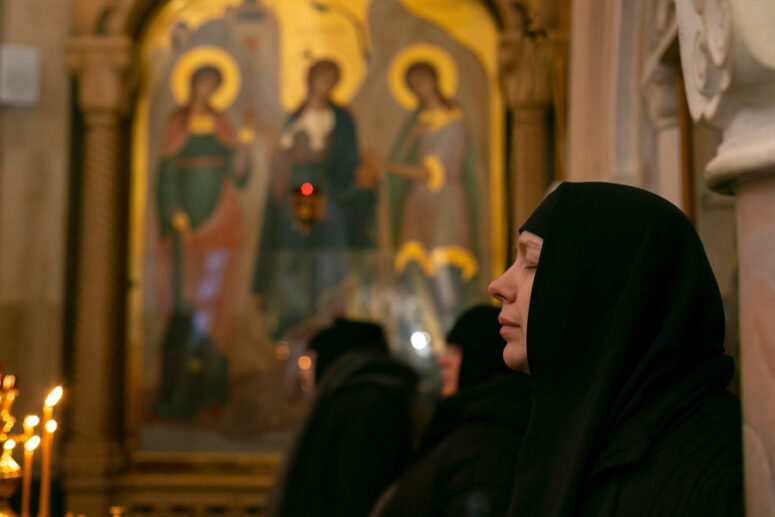
The fezze, prefiguring the modern kamelaukion and klobuk, was a male headdress. Therefore, in Greek Churches, only men wear kamelaukia and klobuks. If a nun wears these headdresses, then she belongs to a Church of the Russian tradition. Today’s Romanian nuns wear something similar to low kamelaukia, but they call them skufias.

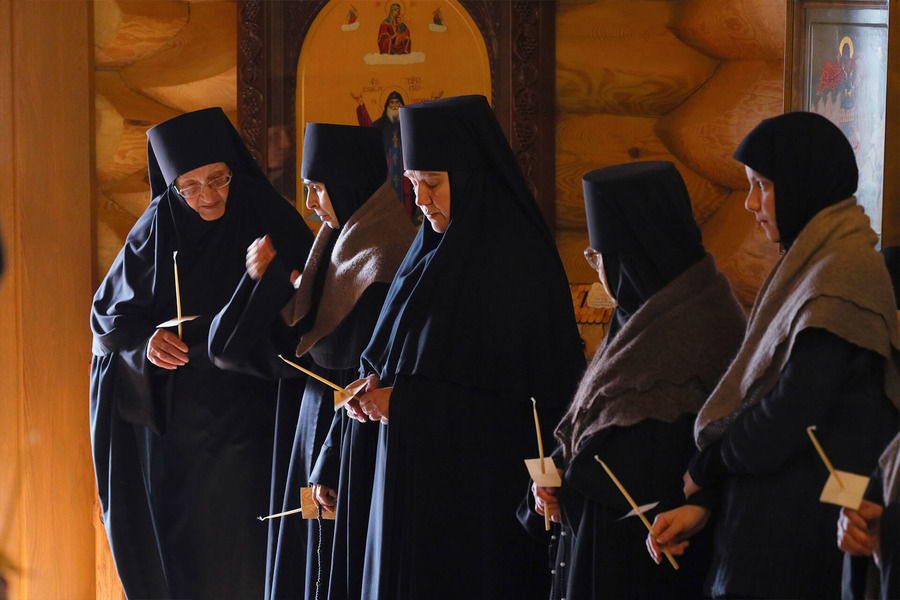
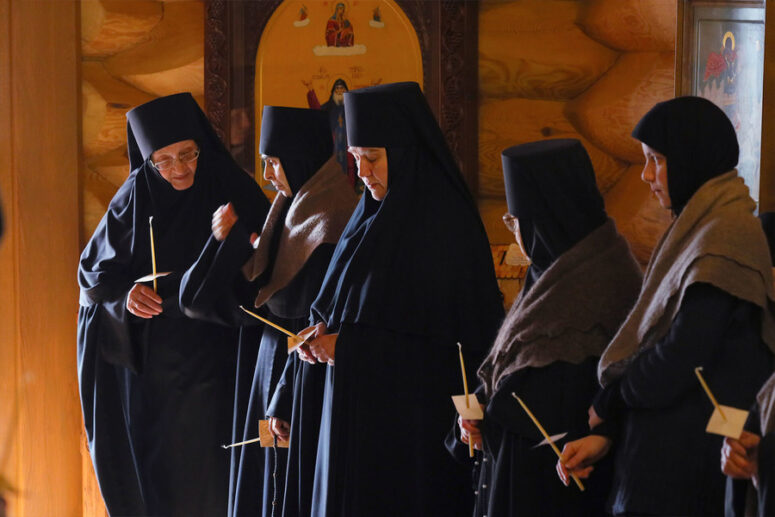
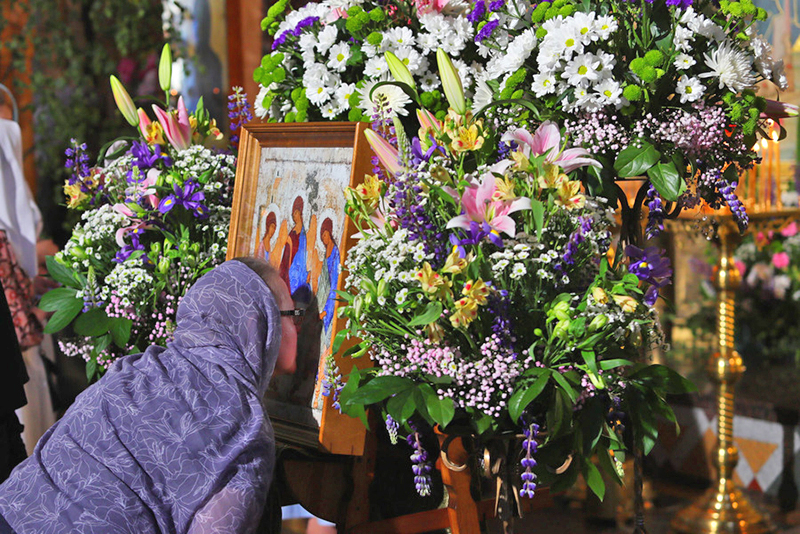


I AM LOOKING FOR A WOOL “KAMELAUKIA” HEADWEARE.
P.O.BOX 5133 NIKOLAEVSK, ALASKA 99556
Thank you for your request. Please contact us at st.elisabeth.shop@gmail.com and our brothers ans sisters will help you with the order. Or you can choose kamilavka yourself on our website: https://catalog.obitel-minsk.com/sewing/orthodox-priests-headwear/kamilavkas.html
A suggestion for your consideration. How about explaining the symbols on the various pieces and translating the wording into English?